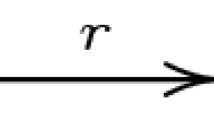Abstract
In his Scientific Representation. Paradoxes of Perspective (2008), Bas van Fraassen offers a pragmatic account of scientific representation and representation tout court. In this paper I examine the three conditions for a user to succeed in representing a target in some context: identification of the target of the representational action, representing the target as such and correctly representing it in some respects. I argue that success on these three counts relies on the supposed truth of some predicative assertions, and thus that truth is more fundamental than representation. I do this in the framework of a version of the so-called “structural” account of representation according to which the establishment of a homomorphism by the user between a structure abstracted from the intended target and some relevant structure of the representing artefact is a necessary (although certainly not sufficient) condition of success for representing the target in some respects. Finally, on the basis of a correspondence view (not theory) of truth, I show that it is possible to address what van Fraassen calls “the loss of reality objection”.
Access this chapter
Tax calculation will be finalised at checkout
Purchases are for personal use only
Similar content being viewed by others
Notes
- 1.
See Chakravartty (2010, p. 206). Intentionality is essential to the success of all kinds of representation, not only scientific representation.
- 2.
We use bold font to refer to structures, e.g. A, and italic to denote the domains, e.g. A.
- 3.
If some of the elements belonging to the domains do not stand in any relation, we have what Da Costa and French call a “partial structure” (2003, p. 19).
- 4.
Dunn and Hardegree give the definition for similar structures, namely structures of the same type, that is, whose families of degrees of their respective relations are the same (p. 10). Our philosophical discussion will implicitly be restricted to representations which involve structures of the same type. For example, two structures which contain only one-place relations (properties) and two-place relations are similar.
- 5.
A structure can be a faithful homomorphic image of another structure, without being accurate or exact. We come back to this important point below.
- 6.
On this I disagree with Bartels (2006, p. 12) who claims that “causal relations” between two things, such as between an object and a photograph of it, can play a role in determining the direction, and thus the asymmetry, of a representation. The asymmetry is determined by the intention of the user only.
- 7.
Again, a user could use the so-called caricature of Mrs. Thatcher to represent Bismarck say, by means of another referential action.
- 8.
Meyer (1995, p. 616, Fig. 709). The map is part of the collection of the Linden-Museum in Stuttgart. I wish to thank Anthony Meyer and Dr. Ingrid Heermann, curator of the Oceanic art section of the Linden-Museum for their kind authorization to reproduce this photograph. [I here revisit an example discussed in Ghins (2011)].
- 9.
- 10.
On this I disagree with Bartels (2006, p. 14).
References
Bartels, A. (2005). Strukturale Repräsentation. Paderborn: Mentis.
Bartels, A. (2006). Defending the structural concept of representation. Theoria, 55, 7–19.
Chakravartty, A. (2010). Informational versus functional theories of representation. Synthese, 172, 197–213.
Da Costa, N., & French, S. (2003). Science and partial truth. A unitary approach to models and scientific reasoning. Oxford: Oxford University Press.
Dunn, J. M., & Hardegree, G. M. (2001). Algebraic method in philosophical logic. Oxford: Clarendon Press.
Ghins, M. (2009). “Realism”, entry of the online. Interdisciplinary Encyclopaedia of Religion and Science. http://www.inters.org
Ghins, M. (2010). Bas van Fraassen on Scientific Representation. Book Symposium on van Fraassen’s Scientific Representation. Analysis, 70, 524–536. http://analysis.oxfordjournals.org/cgi/reprint/anq043?ijkey=8y8OZR6C4lhmJCy&keytype=ref
Ghins, M. (2011). Models, truth and realism: Assessing Bas Fraassen’s views on scientific representation. In Science, Truth and Consistency: A Festschrift for Newton da Costa- Proceedings of the CLE/AIPS Event 2009. Ed. by Evandro Agazzi, Itala D’Ottaviano and Daniele Mundici. Manuscrito Vol. 34, pp. 207–232. http://www.cle.unicamp.br/manuscrito/
Goodman, N. (1976). Languages of art: An approach to a theory of symbols. Hackett Publishing Company.
Meyer, A. J. P. (1995). Oceanic Art - Ozeanische Kunst - Art océanien. Cologne: Könemann.
Pero, F., & Suárez, M. (2015). Varieties of misrepresentation and homomorphism. European Journal for Philosophy of Science. http://springerlink.bibliotecabuap.elogim.com/article/10.1007/s13194-015-0125-x
Suárez, M. (2003). Scientific representation: Against similarity and isomorphism. International Studies in the Philosophy of Science, 17, 226–244.
Suárez, M. (2004). An inferential conception of scientific representation. Philosophy of Science, 71, 767–779.
Suppes, P. (1967), What is a scientific theory? In S. Morgenbesser (Ed.), Philosophy of Science Today (pp. 55–67). New York: Basic Books.
Suppes, P. (2002). Representation and invariance of scientific structures. Stanford: CLSI.
van Fraassen, B. (1980). The scientific image. Oxford: Oxford University Press.
van Fraassen, B. (2002). The empirical stance. New Haven: Yale UniversityPress.
van Fraassen, B. (2008). Scientific representation. Paradoxes of perspective. Oxford: Oxford University Press.
van Fraassen, B. (2010a). “Summary”. Book Symposium on van Fraassen’s Scientific Representation. Analysis, 70, 511–514. http://analysis.oxfordjournals.org/cgi/reprint/anq043?ijkey=8y8OZR6C4lhmJCy&keytype=ref
van Fraassen, B. (2010b). Reply to Contessa, Ghins and Healey. Book Symposium on van Fraassen’s Scientific Representation. Analysis, 70, 547–556. http://analysis.oxfordjournals.org/cgi/reprint/anq043?ijkey=8y8OZR6C4lhmJCy&keytype=ref
Acknowledgement
I would like to thank Otávio Bueno, Marco Giunti, Dimitris Kilakos, Diego Marconi, Stathis Psillos and Alberto Voltolini for their useful comments at oral presentations of some parts of this paper, and Peter Verdee for his suggestions on the more technical parts.
Author information
Authors and Affiliations
Corresponding author
Editor information
Editors and Affiliations
Rights and permissions
Copyright information
© 2016 Springer International Publishing Switzerland
About this paper
Cite this paper
Ghins, M. (2016). Bas van Fraassen on Success and Adequacy in Representing and Modelling. In: Magnani, L., Casadio, C. (eds) Model-Based Reasoning in Science and Technology. Studies in Applied Philosophy, Epistemology and Rational Ethics, vol 27. Springer, Cham. https://doi.org/10.1007/978-3-319-38983-7_2
Download citation
DOI: https://doi.org/10.1007/978-3-319-38983-7_2
Published:
Publisher Name: Springer, Cham
Print ISBN: 978-3-319-38982-0
Online ISBN: 978-3-319-38983-7
eBook Packages: Religion and PhilosophyPhilosophy and Religion (R0)




